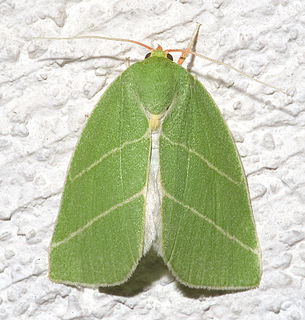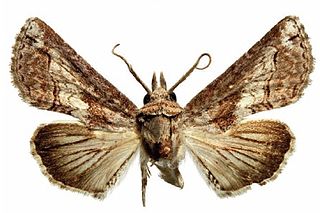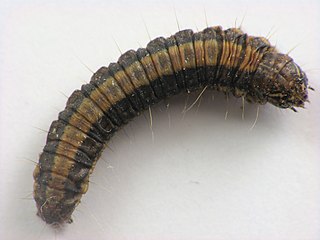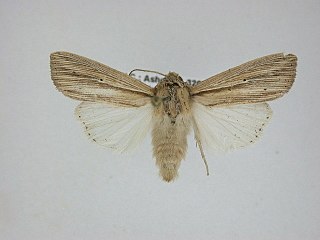Related Research Articles

Chloephorinae is a subfamily of the moth family Nolidae. It includes, among others, many of the moths known as silver-lines. They are rather similar to some owlet moths (Noctuidae) in appearance and often colored a vivid green, but may also be brown, grey, or white.

Spilomelinae is a very species-rich subfamily of the lepidopteran family Crambidae, the crambid snout moths. With 4,132 described species in 340 genera worldwide, it is the most speciose group among pyraloids.

Hypena is a genus of moths in the family Erebidae. It was first described by Franz von Paula Schrank in 1802. These non-migratory moths overwinter as pupae and almost never come to bait as adults.

Omiodes is a moth genus in the family Crambidae. Several species are endemic to Hawaii.

Orthonama obstipata, the gem, is a moth of the family Geometridae. The species was first described by Johan Christian Fabricius in 1794. It is common in continental Europe and adjacent lands, though in the northeast, its range does not significantly extend beyond the Baltic region and it is absent from northern Russia. This well-flying species is somewhat prone to vagrancy and able to cross considerable distances of open sea; it can thus be regularly found on the British Isles and even on Iceland.
Lambula is a genus of moths in the family Erebidae. The genus was erected by Francis Walker in 1866.

Macaduma is a genus of moths in the subfamily Arctiinae.

Mulona is a genus of moths in the subfamily Arctiinae. The genus was erected by Francis Walker in 1866.

Virbia is a genus of tiger moths in the family Erebidae. The genus was erected by Francis Walker in 1854.

Leucania is a genus of moths of the family Noctuidae first described by Ferdinand Ochsenheimer in 1816.

Euteliidae is a family of moths in the superfamily Noctuoidea. The family was erected by Augustus Radcliffe Grote in 1882.

Eupitheciini is a tribe of geometer moths under subfamily Larentiinae, often referred to as pugs. The tribe was described by Tutt in 1896.

Tebenna is a genus of moths in the family Choreutidae.

The Chrysauginae are a subfamily of snout moths. They are primarily Neotropical and include about 400 described species.

The Epipaschiinae are a subfamily of snout moths. Almost 600 species are known today, which are found mainly in the tropics and subtropics. Some occur in temperate regions, but the subfamily is apparently completely absent from Europe, at least as native species. A few Epipaschiinae are crop pests that may occasionally become economically significant.
Pomatiopsis lapidaria is an amphibious species of snail with gills and an operculum, a gastropod mollusk in the family Pomatiopsidae.
Mulona piperita is a moth of the subfamily Arctiinae first described by Reich in 1933. It is found in Brazil.
Tebenna lapidaria is a moth in the family Choreutidae. It was described by Edward Meyrick in 1909. It is found in Bolivia.

Leucania lapidaria is a species of cutworm or dart moth in the family Noctuidae. It is found in North America.
References
- ↑ Savela, Markku. "Mulona lapidaria Walker, 1866". Lepidoptera and Some Other Life Forms. Retrieved February 7, 2018.
- Pitkin, Brian & Jenkins, Paul. "Search results Family: Arctiidae". Butterflies and Moths of the World. Natural History Museum, London.
| This Lithosiini-related article is a stub. You can help Wikipedia by expanding it. |